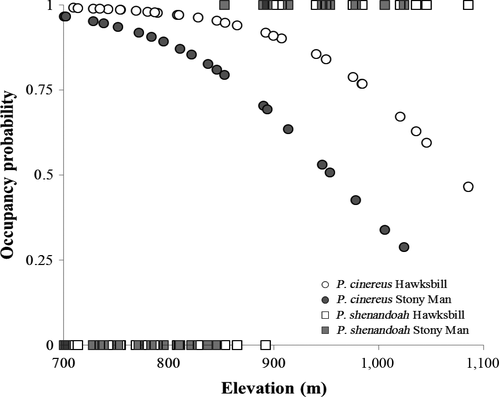Evidence that climate sets the lower elevation range limit in a high-elevation endemic salamander
Abstract/Summary
A frequent assumption in ecology is that biotic interactions are more important than abiotic factors in determining lower elevational range limits (i.e., the ?warm edge? of a species distribution). However, for species with narrow environmental tolerances, theory suggests the presence of a strong environmental gradient can lead to persistence, even in the presence of competition. The relative importance of biotic and abiotic factors are rarely considered together, though understanding when one exerts a dominant influence on controlling range limits may be crucial to predicting extinction risk under future climate conditions. Multiple transects spanning the elevational range limit of Plethodon shenandoah were sampled, and site and climate covariates were recorded. A two-species conditional occupancy model, accommodating heterogeneity in detection probability, was used to relate variation in occupancy with environmental and habitat conditions. Regional climate data were combined with datalogger observations to estimate the cloud base heights and to project future climate change impacts on cloud elevations across the survey area. By simultaneously accounting for species? interactions and habitat variables, we find that elevation, not competition, is strongly correlated with the lower elevation range boundary for a high-elevation endemic salamander, which had been presumed to be restricted mainly as a result of competitive interactions with a congener. Because the lower elevational range limit is sensitive to climate variables, projected climate change across its high-elevation habitats will directly affect the species? distribution. Testing of assumptions of factors that set species range limits should use models which accommodate detection biases.
Publication details
| Published Date: | 2018-07-06 |
| Outlet/Publisher: | Ecology and Evolution |
| Media Format: |
ARMI Organizational Units:
Northeast - BiologyTopics:
DroughtSpecies and their Ecology
Place Names:
Shenandoah National ParkKeywords:
climateecology
habitat
occupancy
threatened species

